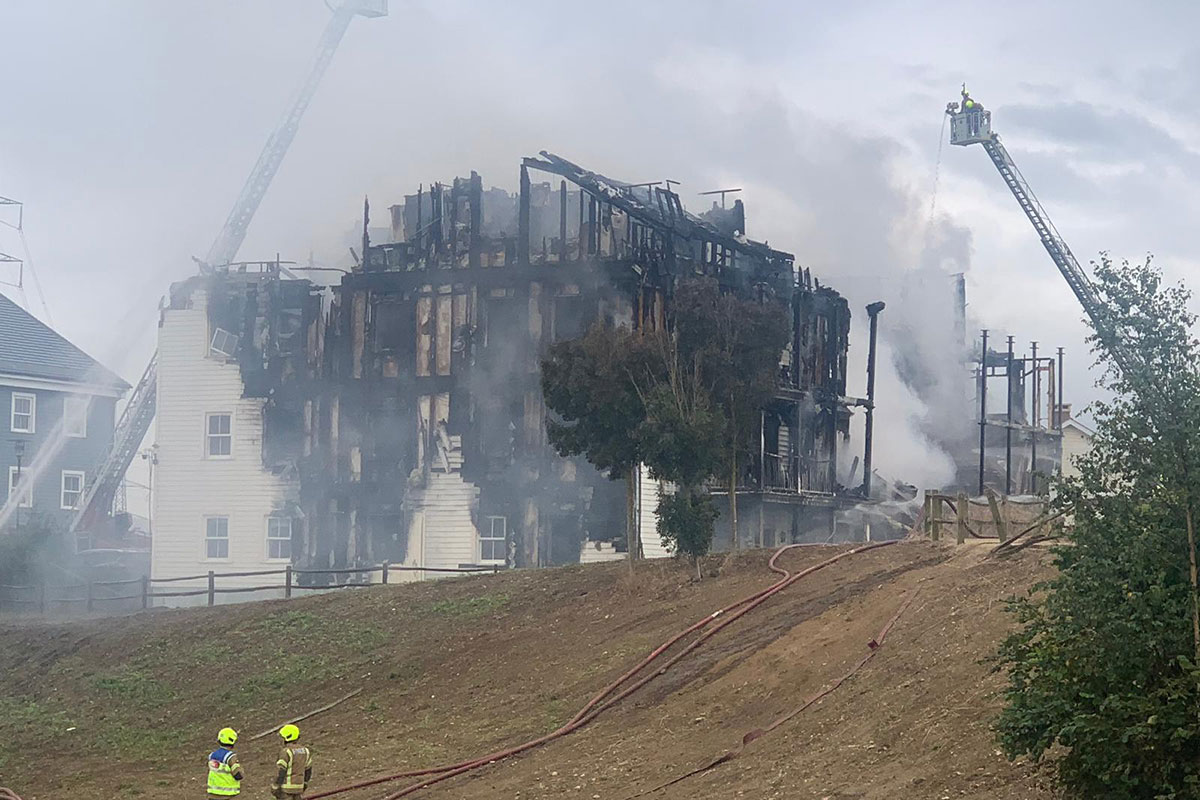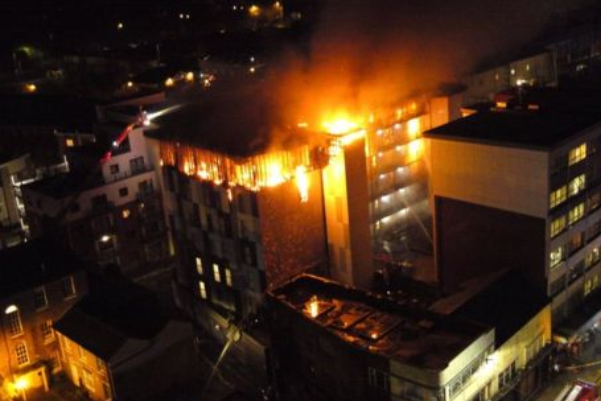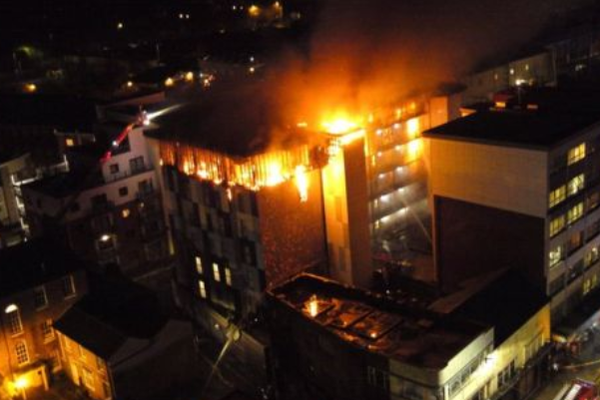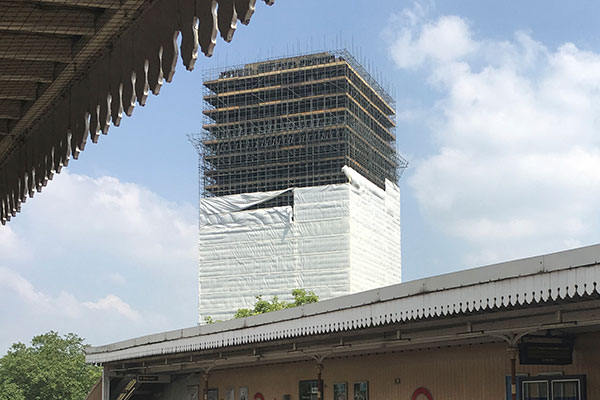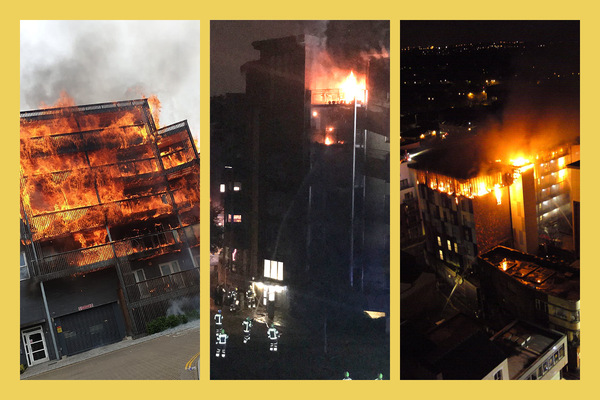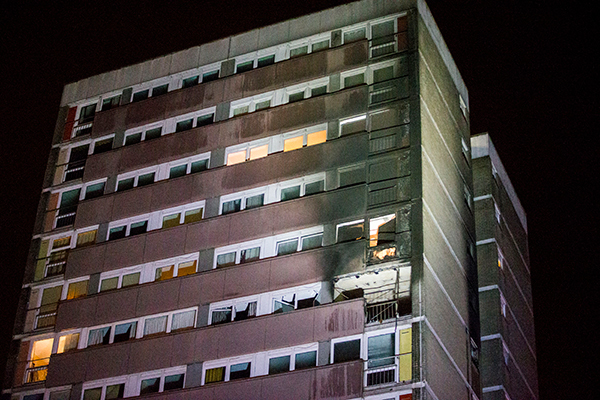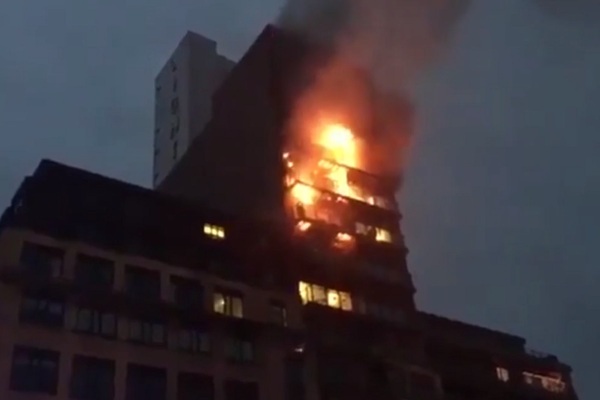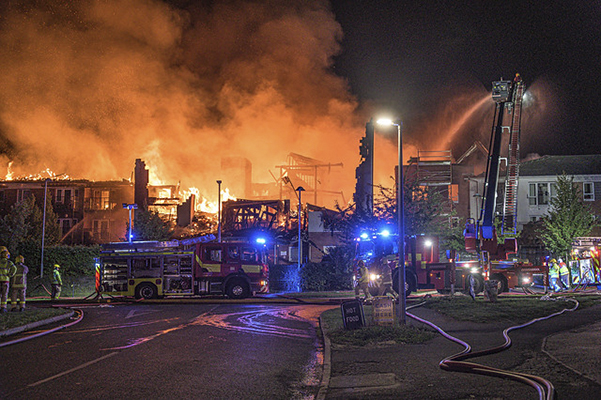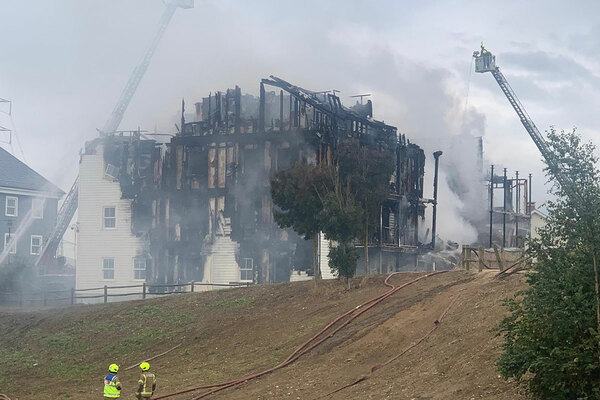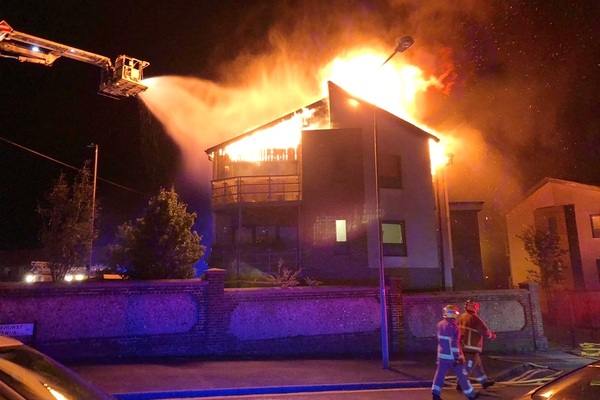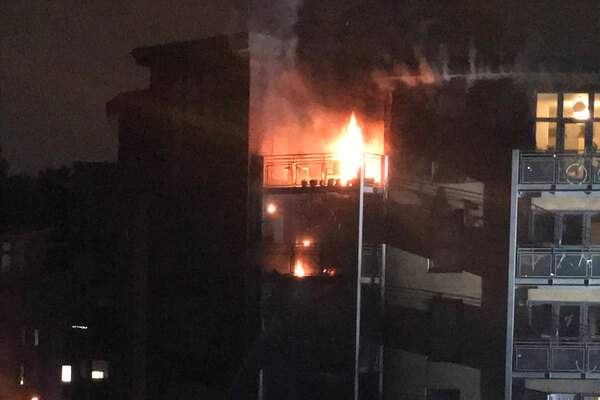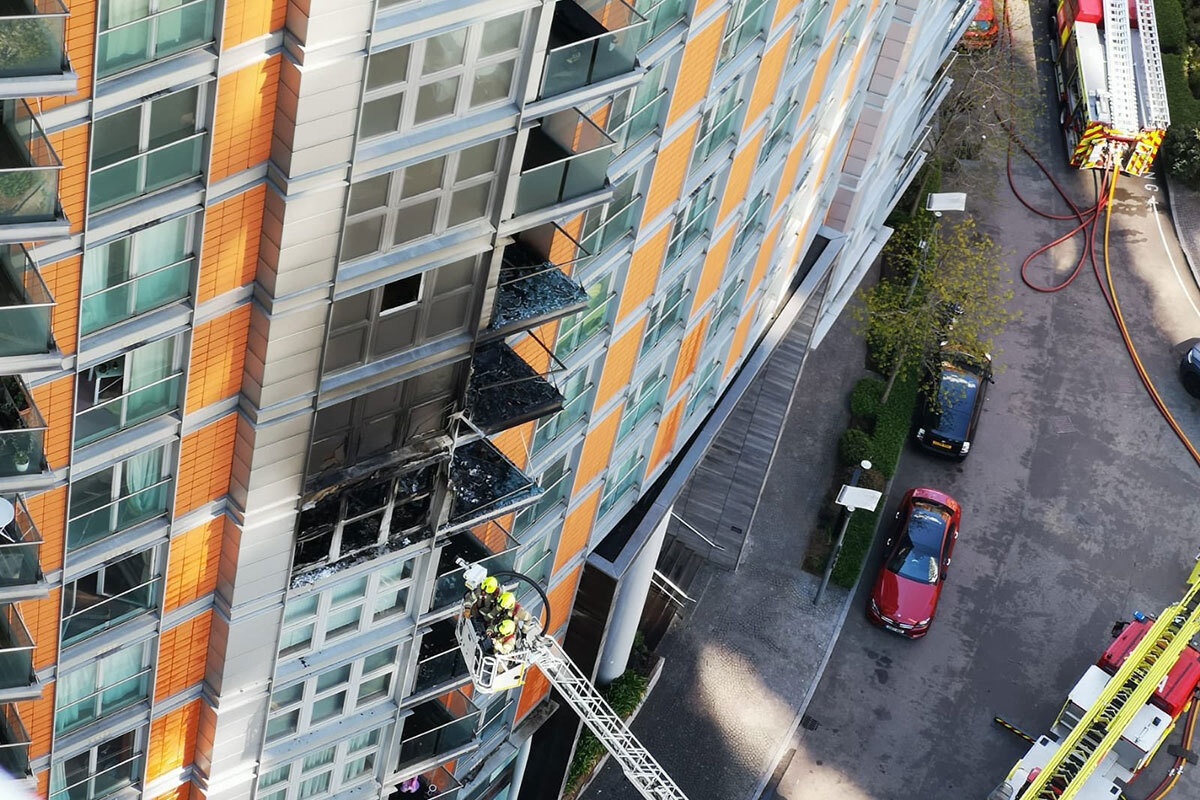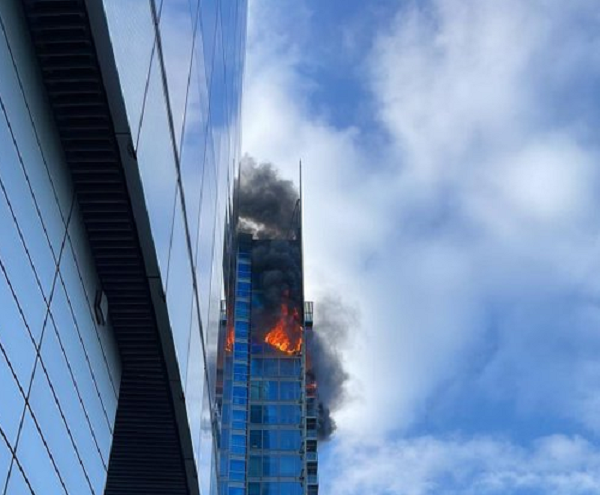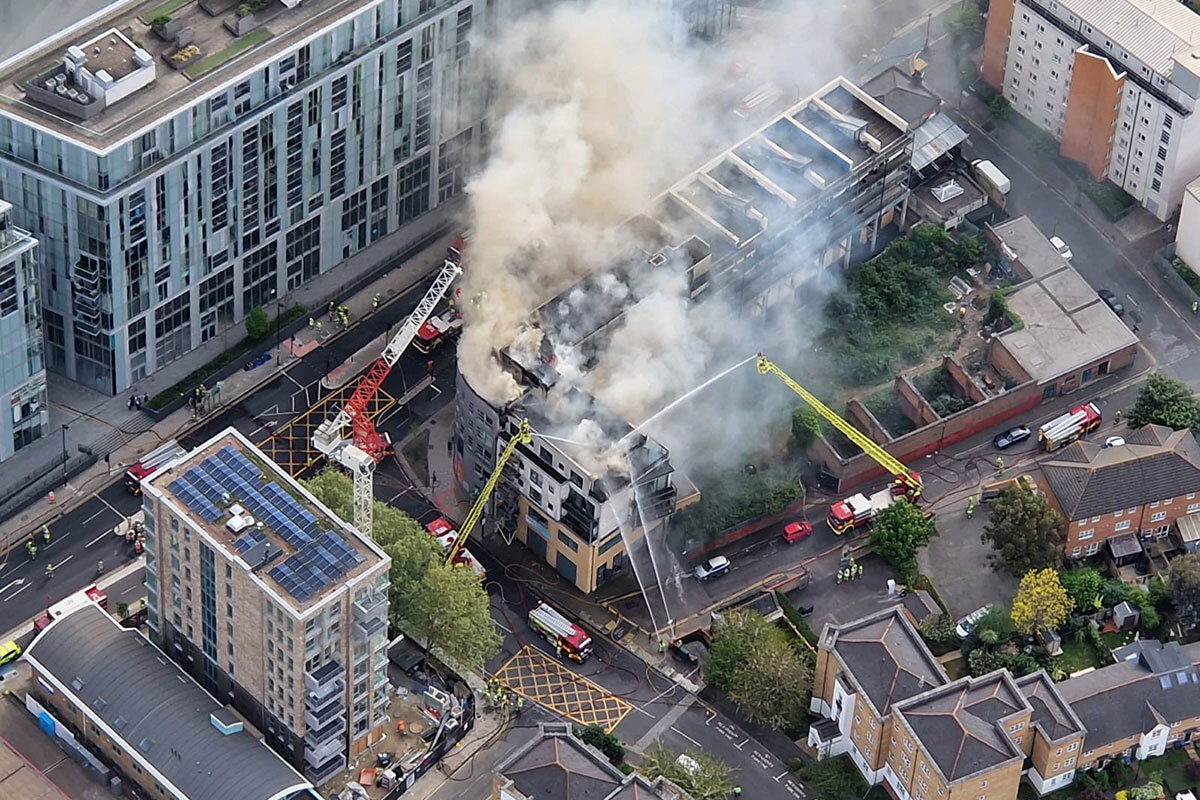You are viewing 1 of your 1 free articles
Warning signs: a timeline of major residential fires post-Grenfell
It is almost the fifth anniversary of the Grenfell Tower fire, in which 72 people were killed. Nearly five years on, the threat of large-scale fires driven by fire safety issues has not gone way. Inside Housing runs through the other major residential fires since Grenfell
This story was originally published in November 2019, following the Cube fire in Bolton. We are updating this piece today as part of our coverage on the fifth anniversary of the Grenfell Tower fire.
It has been nearly five years since the Grenfell Tower fire. The blaze, which resulted in the deaths of 72 people, exposed a far wider problem of fire safety issues in residential buildings across the UK.
Inspections of blocks have revealed widespread use of combustible materials, as well as other fire safety issues, which have increased the chances of fires spreading and causing harm.
But despite the devastation that Grenfell caused, it did not stop large residential fires occurring throughout the country.
Since the Grenfell Tower fire in 2017, we have seen several large-scale fires – often in buildings still containing dangerous materials.
These act as a reminder for how devastating fires in residential blocks can be and provide consistent warnings about the dangers of combustible materials.
Here, Inside Housing charts the fires following Grenfell in which the buildings had combustible materials in their structures.
Coolmoyne House fire, Belfast
24 November 2017
Residents were evacuated from a 15-storey tower block in Belfast after flames ripped through a ninth-floor flat and spread up the outside of the building. Firefighters told the BBC at the time that the fire was “accidental” and that the resident of the flat in which the fire started “was making toast at the time”.
Pictures from the aftermath show that solid panels next to the window frames had been destroyed by the fire, while plastic window frames also sustained damage.
Fire safety expert Arnold Tarling told Inside Housing that the residents of the 56-flat tower, managed by the Northern Ireland Housing Executive, were “incredibly lucky” that the fire did not spread to other flats.
Lighthouse Apartments fire, Manchester
(Picture: Tracey Shipham)
30 December 2017
Three people were treated for smoke inhalation and one man was taken to hospital after a fire broke out at the Lighthouse Apartments in Manchester’s Northern Quarter in late December 2017.
It started on the ninth floor of the 12-storey block and climbed up the 10th and 11th floors via wooden balconies, according to Greater Manchester Fire and Rescue Service.
The fire had spread to multiple floors but we have things well under control here. Firefighters along with colleagues from the Police and Ambulance service have done an amazing job to tackle this difficult incident! More updates to follow... pic.twitter.com/lgBOPX54Hq
— Greater Manchester Fire & Rescue Service (@manchesterfire)The fire had spread to multiple floors but we have things well under control here. Firefighters along with colleagues from the Police and Ambulance service have done an amazing job to tackle this difficult incident! More updates to follow... pic.twitter.com/lgBOPX54Hq
— Greater Manchester Fire & Rescue Service (@manchesterfire) December 30, 2017
Building owner CapitalClimb said it was “satisfied following the fire officers’ report that the building performed as designed in the circumstances”, while Manchester City Council said inspections of the block showed that its fire alarm systems worked properly and that it complies with building regulations.
Orwell Building fire, West Hampstead
3 July 2018
More than 50 firefighters were sent to put out a fire at a block in West Hampstead Square in north London in July 2018.
The fire started on a third-floor external balcony and spread across three other balconies from the fourth to sixth floor of the building. It was recorded that the fire was caused by “careless disposal of smoking materials into a plant pot”. There were no injuries, but the fire damaged five apartments.
A total of eight residents were evacuated, and some had to be placed in temporary accommodation.
Firefighters are working hard to tackle a fire in #WestHampstead. Three balconies are currently alight t.co/xBnCTtCFPa ©@k_leevers pic.twitter.com/4Led1KUtgs
— London Fire Brigade (@LondonFire)Firefighters are working hard to tackle a fire in #WestHampstead. Three balconies are currently alight https://t.co/xBnCTtCFPa ©@k_leevers pic.twitter.com/4Led1KUtgs
— London Fire Brigade (@LondonFire) July 3, 2018
The block of flats was completed in 2017 by luxury flat developer Ballymore. The balconies were constructed through a steel frame with aluminium facia and composite decking and plastic soffits.
In the week after the fire, Inside Housing unearthed a report commissioned by the government that warned of the dangers of fires spreading across balconies up the external facade.
Samuel Garside House fire, Barking
9 June 2019
On a warm Sunday evening in June, a fire that, according to eyewitnesses, was started by a fallen barbecue, quickly caught hold of the Samuel Garside block in Barking. The fire spread within minutes across the building’s wooden balconies and decorative cladding.
Arguably more worrying was what was happening inside the block. The building’s smoke vents malfunctioned and the magnetic doors through which residents were trying to escape jammed.
Read the story of the Barking fire here
Issues with the fire service finding a fire hydrant meant that water was not being directed at the flames for a number of minutes, leading to the fire spreading further and ravaging the interiors of some of the flats.
Two people were treated for smoke inhalation.
After the fire it emerged that the material used on the block was Thermowood, a Class D fire-rated timber material, which residents also found out had not been treated with any fire-resistant covering.
As Samuel Garside House is under 18m tall, there were no restrictions on the combustibility of the cladding that could be used.
According to the developer Bellway, 20 flats had fire damage, and eight required more than six months of restoration work.
Beechmere Retirement Home fire, Crewe
9 August 2019
In August this year a fire broke out at a 132-home retirement complex in Crewe, managed by Your Housing. The fire started in the roof, where construction workers were carrying out repairs, but it ended up destroying the majority of the building and leaving around 150 older people homeless.
Opened in 2009, the Beechmere retirement complex was was one of five built under a private finance initiative contract between Cheshire County Council and developer Avantage. A news article from 2008 revealed that the building was constructed using 1,700 cubic metres of timber frame, believed to be the largest timber content of any onsite project in Europe.
Does the Crewe fire raise questions about timber frame? Read our analysis here
Speaking at the Fire Protection Association’s Fire Sector Summit earlier this month, Mark Cashin, chief fire officer at Cheshire Fire and Rescue Service, said that the fire behaved in a “very, very peculiar way” and was “almost impossible to fight”.
The fire brigade revoked the building’s ‘stay put’ policy after neighbours took it upon themselves to start evacuating residents themselves. Luckily everyone escaped, but Mr Cashin said that the situation could have been very different if the fire had happened on a winter night, rather than a summer afternoon.
Both Mr Cashin and Crewe MP Laura Smith have since raised concerns about vulnerable people being housed in timber-framed buildings.
Richmond House fire, Worcester Park, London
9 September 2019
Exactly a month after the fire in Crewe, another blaze broke out in Richmond House, a timber-framed building in south-west London.
Built in 2011, the building was owned and managed by Metropolitan Thames Valley Housing (MTVH). All 23 shared ownership flats were completely destroyed.
According to Rick Ogden, group manager at the London Fire Brigade, the fire was “well developed and intense” by the time crews arrived. The authorities are yet to confirm what caused the fire.
Since the fire, MTVH has installed a 24-hour waking watch in each of the 15 buildings it owns on the estate in Worcester Park, of which Richmond House was a part.
At the #WorcesterPark fire. Looks like the fire services may be here for a while. Local MP @scullyp has just arrived. pic.twitter.com/CTWWgedaO3
— Henry Riley (@HenryRiley1)At the #WorcesterPark fire. Looks like the fire services may be here for a while. Local MP @scullyp has just arrived. pic.twitter.com/CTWWgedaO3
— Henry Riley (@HenryRiley1) September 9, 2019
It is also carrying out intrusive surveys of the other buildings and has changed the evacuation policy from stay put to simultaneous evacuation.
Following the fires in Worcester Park and Crewe, sector bodies including the Royal Institute of British Architects called for sprinklers to be installed in new blocks. Jim Glockling, technical director at the Fire Protection Association, said fires in which buildings are completely lost may become the “new normal” because of the increased use of combustible building methods such as light timber frame.
Pankhurst Avenue, Brighton
September 2019
It was a discarded cigarette on a balcony which caused the 122-124 Pankhurst Avenue to be engulfed by flames in September 2019. The three-storey block owned by housing association The Guinness Partnership, had to be evacuated as the fire completely destroyed the four flats and the building’s roof.
So severely damaged was it that it had to be fully demolished. Even more troubling was the fact that the building had a stay put policy on it when the fire took place.
In a statement by Guinness after the fire, it admitted that the building had not performed as it should have done. However, a notice by the East Sussex Fire and Rescue Service would outline a more sobering assessment of the fire, when it said the speed and extent of the fire would have represented a significant risk to life of those living in 12 flats on the upper floors of the block. This was largely because the fire stopping in the building’s roof was inadequate.
It added that the time of day of the fire and alertness of the occupiers was the reason residents were able to evacuate so quickly.
The fire service said it had not found negligence and wouldn’t be taking legal action against Guinness. However, the residents said they would, and in 2021 launched a crowdfunding campaign that would allow them to investigate legal action against the landlord.
They had complained he fire could have been smaller if the building had been “properly designed and/or constructed” and that if Guinness had “undertaken proper investigations, these defects could have been identified earlier”.
Limehouse Lodge fire, Clapton, London
16 September 2019
Late on a Monday night, flames clambered up the outside of Limehouse Lodge, a block of flats in Clapton, north-east London. It was built by Taylor Wimpey and is managed by RMG, while housing association Local Space was also using 13 flats for temporary accommodation.
No injuries were reported, but firefighters had to rescue a woman from the first floor and needed three hours to get the blaze under control. An eyewitness said it took “about four minutes” for the building to go up in flames.
Footage posted on social media appeared to show the five-storey block’s balconies being eaten up by fire across its entire height. Inside Housing later revealed that cladding at Limehouse Lodge adjacent to the balconies was made from western red cedar with ThermoWood brackets – the same material used at Samuel Garside House. Images of the fire’s aftermath clearly show that these cladded areas were badly burned, while part of a flat on the fifth floor and part of the block’s roof were also damaged.
Large five story fire in Upper Clapton now. Seems to be on wooden balconies - three fire engines just arrived pic.twitter.com/f69RSnvisb
— Georgina Rannard (@GeorginaRannard)Large five story fire in Upper Clapton now. Seems to be on wooden balconies - three fire engines just arrived pic.twitter.com/f69RSnvisb
— Georgina Rannard (@GeorginaRannard) September 16, 2019
Residents of Limehouse Lodge claimed that they had asked questions about their building’s cladding after Grenfell and were told it had been “treated” to make it more fire resistant. Taylor Wimpey was not able to confirm the cladding’s fire rating when asked, but it said the block was less than 18 metres tall – making it exempt from the government’s recent combustibles ban.
The Cube student halls fire, Bolton
15 November 2019
Around 200 firefighters were called to this devastating blaze at The Cube, a student accommodation block in Bolton managed by Urban Student Life. Shocking images from the scene show flames ripping through the building’s upper floors, apparently spreading via the external cladding. Two people were hurt and 100 residents had to flee their homes.
This time, planning documents indicate that The Cube is clad with high-pressure laminate panels (HPL). Experts have previously warned that HPL – made of wood-based layers impregnated with resin and pressed together under high temperatures – would cause “the next Grenfell”. It was involved in the fire spread at Lakanal House, where six people were killed in 2009.
— Nick Scott (@nickscottuk)
The Ministry of Housing, Communities and Local Government told The Guardian that HPL “must be removed”, contradicting its statement in summer that the material “could be safe” if used with mineral wool insulation.
And – again – The Cube is less than 18m tall and is therefore outside the scope of the ban on combustibles.
Concerns have also been raised about the building’s fire alarm system, with some residents reporting that they believed it was a false alarm because alarms in the block go off frequently for no apparent reason.
New Providence Wharf, Poplar, east London
7 May 2021
It was a Friday morning when the news broke that a fire had begun at New Providence Wharf, a huge development in east London. More than 100 firefighters and 20 fire engines were sent to the scene as residents escaped from the building, where corridors had filled with smoke.
Fortunately, no one was killed, but 40 were treated by paramedics and two were sent to hospital.
This was not the first time we had heard about New Providence Wharf when it came to fire safety.
During the nationwide inspections that took place following Grenfell, it was revealed that this building was covered in aluminium composite material (ACM) – the same cladding found on Grenfell Tower.
Just months before the fire, the government had named and shamed builder and owner Ballymore for not starting work to remove the dangerous cladding from New Providence Wharf.
Grenfell-clad New Providence Wharf on fire @ballymore @BorisJohnson @RobertJenrick what are you doing to protect us??? #FireSafetyBill #firesafetyscandal pic.twitter.com/98mf2dRFGk
— Natalie Carter (@nat77splat)Grenfell-clad New Providence Wharf on fire @ballymore @BorisJohnson @RobertJenrick what are you doing to protect us??? #FireSafetyBill #firesafetyscandal pic.twitter.com/98mf2dRFGk
— Natalie Carter (@nat77splat) May 7, 2021
After the Grenfell tragedy, Ballymore dragged its heels over when the work would be carried out as it tried to avoid paying for the full costs of remediation.
At one point in 2019, Ballymore issued residents with a ‘take it or leave it’ ultimatum, in which it offered leaseholders an interest-free loan to cover the remediation costs. This would come with a 20% contribution from the developer towards the bill.
Fortunately, when the fire broke out last year, the ACM panels did not contribute to the external fire spread, the LFB later confirmed. However, its presence left most residents living with “mental anguish” in the three-and-a-half years since it was discovered that the block had Grenfell-style cladding.
While later investigations would find several other fire safety issues within New Providence Wharf, Inside Housing revealed just a week after the fire that the block’s smoke detection system had failed during the blaze.
A month later, a report by the LFB said the failure of the system led the building to “act like a chimney, leading to a potentially life-threatening situation” for residents inside.
Relay Building, Aldgate, east London
7 March 2022
Dramatic images appeared on social media when a fire broke out at the Relay Building near Aldgate East station.
Filming from nearby showed flames leaving one of the building’s highest floors and entering some of the apartments, as well as full panes of glass falling from the source of the fire and smashing onto the street below.
A total of 60 residents had to be evacuated from the building.
There was significant fire in a residential high-rise in east London this afternoon. It led to dramatic scenes near Aldgate train station as materials fell off the side of the building. So what do we know about the building and the fire? Short thread🧵 t.co/UPnFwfUuk2
— Jack Simpson (@JSimpsonjourno)There was significant fire in a residential high-rise in east London this afternoon. It led to dramatic scenes near Aldgate train station as materials fell off the side of the building. So what do we know about the building and the fire? Short thread🧵 https://t.co/UPnFwfUuk2
— Jack Simpson (@JSimpsonjourno) March 7, 2022
In this case, the facade of the block was largely just steel and glass, which restricted how much the fire could spread. Assessors had stated in a fire risk assessment previously that the external walls were satisfactory in terms of firespread risk. However, this did not take away the danger of debris falling onto the busy streets below.
Inside Housing discovered that although the stay put policy was in place at the Relay Building, there were notices throughout the block telling people to evacuate immediately in the event of a fire.
The building had been built by Redrow, with the ownership of the flats being split with private leaseholders. Renters and shared ownership leaseholders were living in the flats managed by Network Homes.
Creekside Road, Deptford, south-east London
27 April 2022
On an afternoon in April, a fire started on the roof of a five-storey block on Creekside Road in Deptford. A total of 20 fire engines were sent to the building and 120 firefighters tackled the blaze.
Despite a stay put policy being in place, 12 residents evacuated the block. Fortunately, no injuries were reported.
The fire was not put out quickly. The blaze had started at 1pm, but the LFB was not able to not fully extinguish the flames until 12.51am – almost 12 hours after the fire had started.
Throughout the duration of the fire, heavy smoke filled the surrounding area, which affected nearby homes and businesses.
The blaze completely destroyed the roof of the building and entered into a number of voids in the roof, which the LFB said had meant it was difficult to completely extinguish.
Inside Housing later discovered that the building had a timber-frame structure and that the fire had spread within the wall cavities, which resulted some of the inside walls being burned.
Sign up for our fire safety newsletter
Already have an account? Click here to manage your newsletters
